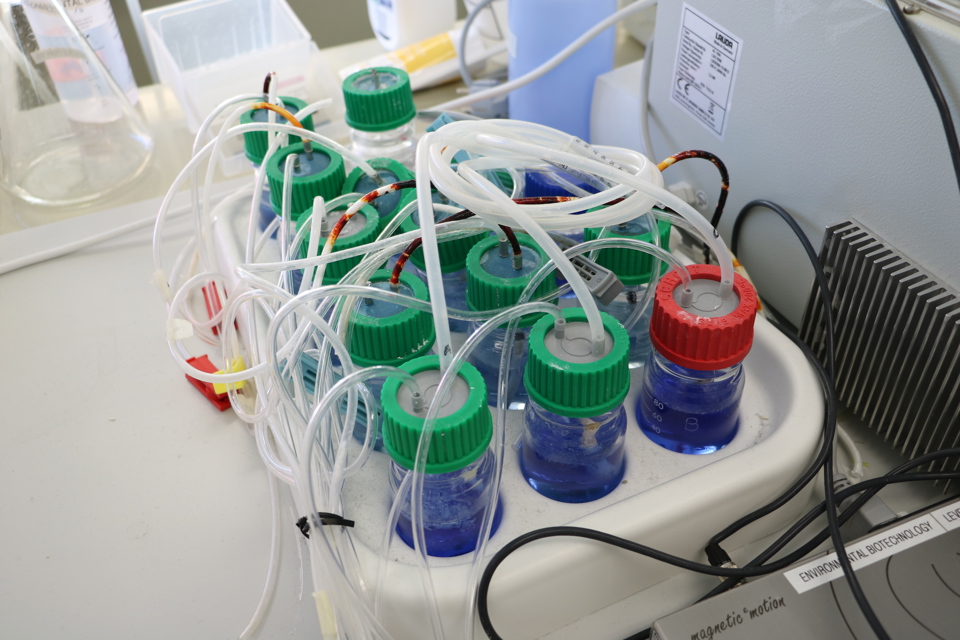Traditional power-to-X processes, in which sustainable energy is transformed to different kinds of fuels, are based on physical-chemical processes. In an innovative new cross-disciplinary project, funded by the Novo Nordisk Foundation, Jeppe Lund Nielsen collaborates with colleagues from Aarhus University on utilizing bacteria in efficient bio-chemical power-to-x processes.
“In general, power-to-X concerns transforming sustainable energy from for instance wind turbines or photovoltaic plants to fuels used in processes that cannot yet utilize green energy directly. Our project focuses on microbial power-to-X, in which we use bacteria’s inherent ability to absorb energy – in the shape of electrons – and CO2, and thereby transform both into biofuels. The technology has been known for years, but in this new project, we bring together a unique combination of competences to optimize the process to industrial scale,” he explains.
The three main researchers in the project come from widely different fields: Jeppe Lund Nielsen is a molecular microbiologist, Anders Bentien, Aarhus University, is an expert within electro chemistry, and Michael Kofoed, also from Aarhus University, is a process engineer. This cross-disciplinary consortium allows the researchers to establish an advanced laboratory setup in which they can evaluate different parameters for optimizing the entire microbial power-to-X process. Such experiments have until now been limited by the amount of energy and CO2 the microbes can absorb from the surroundings.
“In our project, we propose adding artificial carriers (mediators) of energy and CO2 – specific molecules – that the bacteria are able to absorb to a larger degree than if they absorbed the CO2 and energy directly. This means that we can increase the amount of energy absorbed by the bacteria AND at the same time increase the amount of CO2 absorbed – and as such also increase the amount of biofuel produced. We believe that when we find the exact right setup, we will be able to increase the absorption 1000 – or perhaps even 100,000 – times, compared to existing processes,” Jeppe Lund Nielsen explains.
Huge global potential
Once refined and scaled up, the microbial power-to-X processes may be used by, for instance, biogas facilities. Today, biogas consists of 40-60% methane, and the rest is CO2 that is currently just released into the atmosphere. The aim is to utilize this ’free’ resource, in combination with sustainable energy, to produce a larger amount of methane or other kinds of useful fuels, while at the same time reducing CO2 emissions markedly.
“A biological process like this is fairly cheap compared to physical-chemical processes, and it generates more fuel as well. This means that if we can optimize the process, it will be a viable alternative to the traditional power-to-X technologies in areas where we have easy access to both sustainable energy and CO2. In addition, if we manage to optimize the process as much as we believe we can, we will not only be able to create large amounts of sustainable fuels, but we will also be able to have a negative CO2 footprint, that is, absorb more CO2 than is generated – a point which is of course crucial in the battle against global warming,” Jeppe Lund Nielsen explains and finishes:



